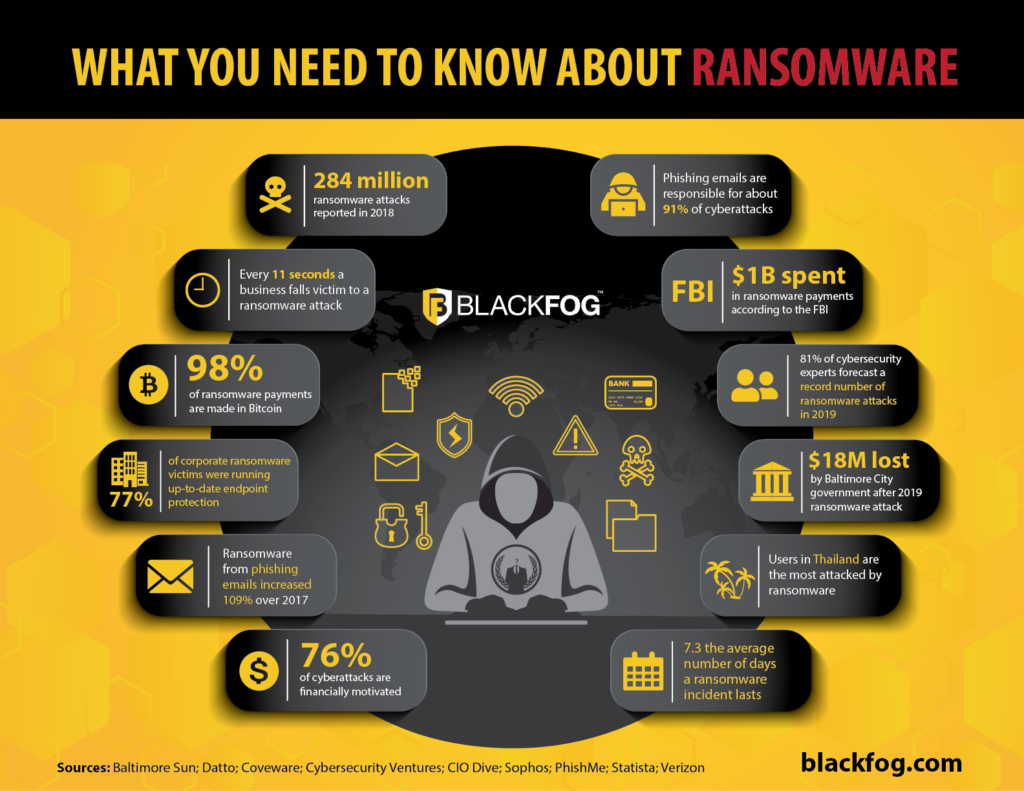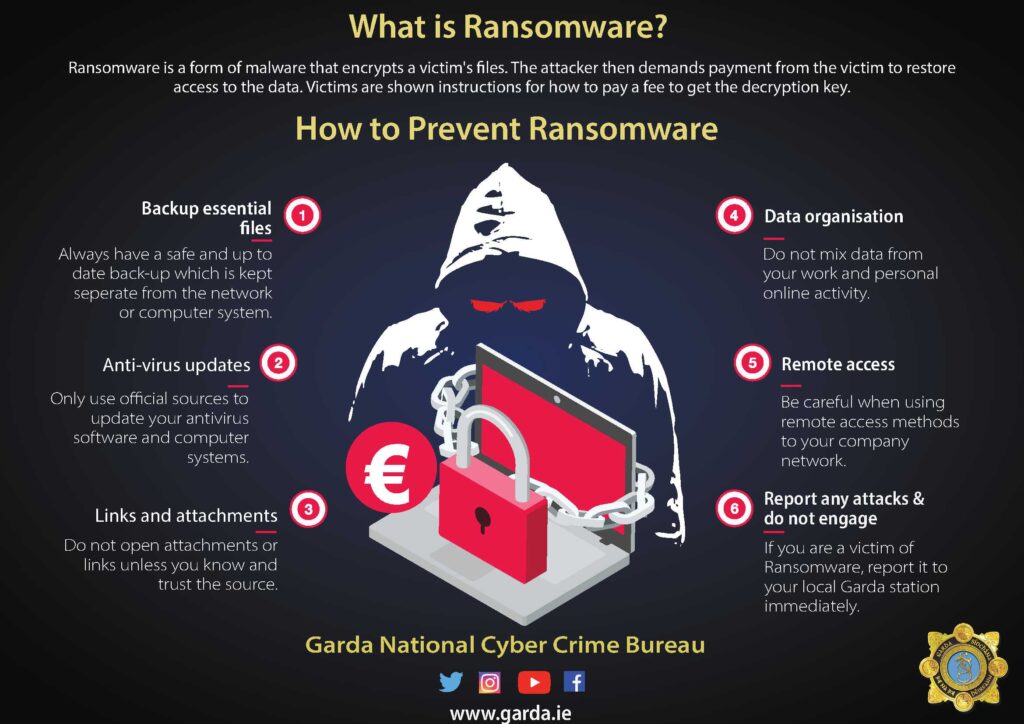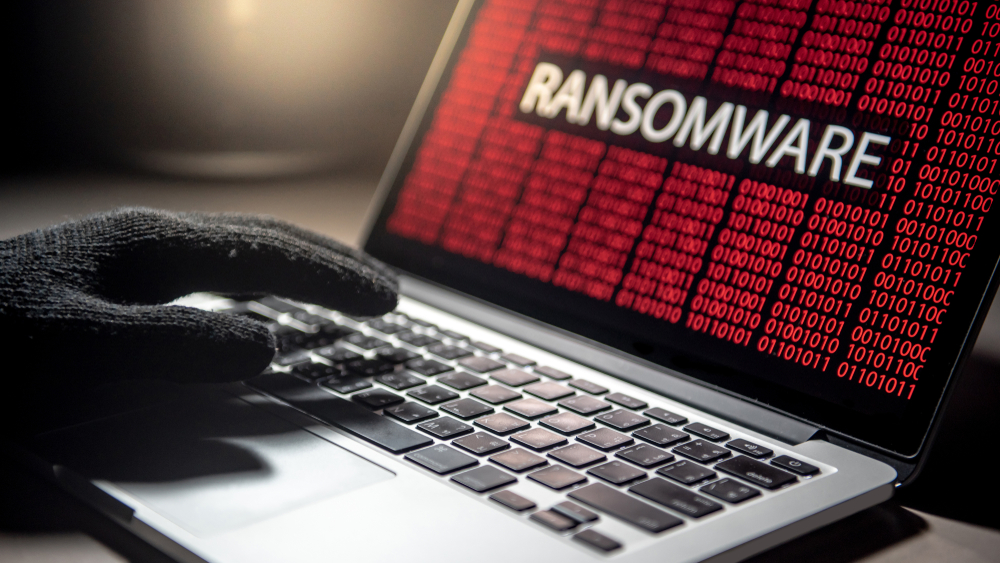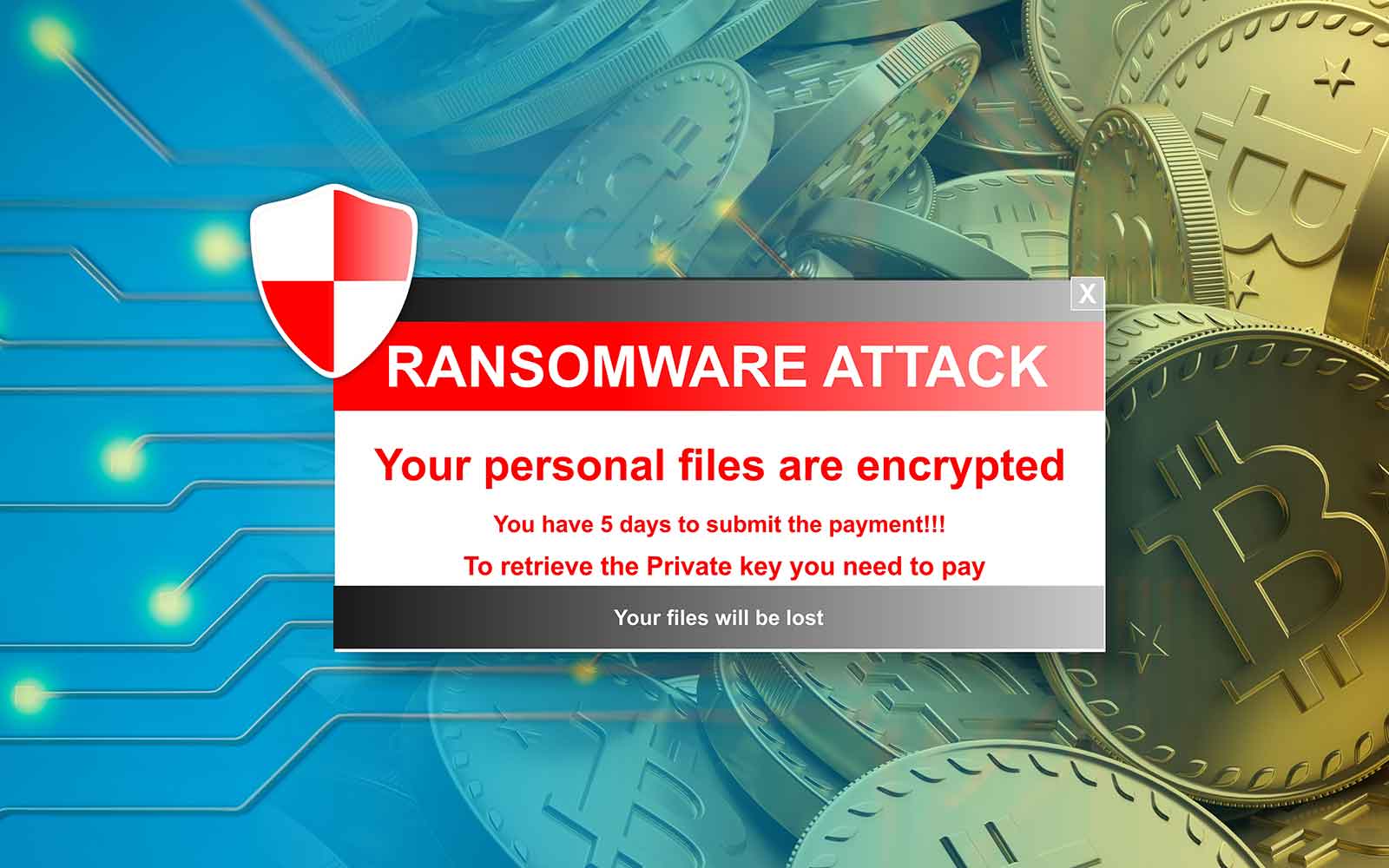Ransomware attacks have become increasingly prevalent in today’s digital landscape, posing a significant threat to individuals and businesses. This blog post will explore what ransomware is, how it works, and how one can protect oneself against it. Understanding the anatomy of a ransomware attack and the common entry points for this type of malware will enable one to safeguard their data proactively. Additionally, It will discuss best practices for protecting against ransomware, securing one’s email from potential attacks, and the critical role of cybersecurity in defending against this growing threat. Lastly, It will outline the necessary steps to take in the event of a ransomware breach and provide essential tips for individuals and businesses to prevent such attacks. Read on to learn how one can strengthen their defences and stay one step ahead in the fight against ransomware.
Understanding Ransomware Attacks
It is malicious software that encrypts files on a computer or network, making them inaccessible to the owner. It then demands a ransom, usually in the form of cryptocurrency, in exchange for providing the decryption key to unlock the files. Its common objectives are financial gain and disruption of operations. It aims to extort money from victims by encrypting their valuable data and demanding a ransom. Additionally, these attacks can cause significant downtime and financial losses for businesses.

The Anatomy of a Ransomware Attack
Understanding how a ransomware attack works is crucial to protect against it. Ransomware is malicious software that encrypts files on a system or network, rendering them inaccessible until a ransom is paid. Here, it will explore the stages of a typical ransomware attack and how the files are held hostage.
Stages of a Typical Ransomware Attack
A ransomware attack generally follows a certain sequence of stages: Delivery: Hackers use various methods to deliver the ransomware to the targeted system. It can occur through malicious email attachments, infected websites, or compromised software. Infection: Once the ransomware is delivered, it infiltrates the system by exploiting vulnerabilities. It can be achieved through social engineering tactics or by exploiting software vulnerabilities. Execution: Once inside the system, the ransomware executes its payload. It starts scanning files on the system and encrypts them using a complex encryption algorithm. Ransom Note: After encrypting the files, the ransomware leaves a ransom note, usually as a text file or a pop-up message. It provides instructions on how to pay the ransom and regain access to the encrypted files. Ransom Payment: The attackers demand a ransom, typically in a cryptocurrency such as Bitcoin, in exchange for providing the decryption key. Payments are often requested through anonymous channels, making it difficult to trace the perpetrators. Decryption: In some cases, after the ransom is paid, the attackers deliver the decryption key, allowing the victim to regain access to their files. However, there is no guarantee that the attackers will uphold their end of the bargain.
How Ransomware Encrypts Files and Holds Them Hostage
It accomplishes file encryption by using sophisticated encryption algorithms that scramble the data, rendering it unreadable. This encryption process targets many file types, including documents, images, videos, and databases. Once the files are encrypted, it alters their file extensions or adds a new extension to indicate that they have been compromised. This prevents the operating system from recognizing and opening the files without the decryption key. Victims cannot access their files or retrieve any valuable information stored within without the decryption key. The attackers hold the decryption key hostage and demand a ransom, giving victims a limited timeframe to pay before the files are permanently lost.
Why Ransomware is a Growing Threat
It has become a significant concern for individuals and businesses alike. There are several factors contributing to its increasing threat.
1. Financial Motivation
It has been proven that ransomware attacks are highly profitable for cybercriminals. With the ability to demand hefty ransom payments, these attacks have become attractive for hackers seeking financial gain.
2. Evolving Attack Techniques
Ransomware attackers continuously evolve their techniques to stay ahead of security measures. They employ sophisticated methods, such as social engineering and encryption algorithms, to exploit vulnerabilities and gain unauthorized access to systems.
3. Easy Accessibility
As technology becomes more accessible, so does its ability for individuals with limited technical knowledge to launch ransomware attacks. Ransomware-as-a-Service (RaaS) platforms have even emerged, allowing it to carry out these malicious activities.
4. Lack of Cybersecurity Awareness
Many individuals and businesses still lack basic understanding and awareness of cybersecurity threats, including ransomware. This knowledge gap leaves it vulnerable to falling victim to these attacks. To stay prepared and minimize the risk of ransomware attacks, organizations and individuals must: Implement robust cybersecurity measures, including regular software updates and patch management. Conduct regular backups of critical data to ensure the ability to restore files without paying ransoms. Educate employees and individuals on cybersecurity best practices and how to recognize potential ransomware threats. Utilize advanced security technologies, such as firewalls, intrusion detection systems, and antivirus software. Understanding the growing threat landscape and taking proactive measures can enhance its resilience against ransomware attacks.
Common Entry Points for Ransomware
Ransomware attacks can infiltrate a system or network through various entry points. Understanding these common entry points is crucial for organizations to strengthen their defense against ransomware. Here are some of the most frequently exploited entry points:
1. Phishing Emails
Phishing emails remain one of the primary ways ransomware enters a system. Cybercriminals use deceptive emails that appear legitimate to trick users into clicking on malicious links or downloading infected attachments. It is important to educate employees about the signs of phishing emails and to encourage them to exercise caution when interacting with emails from unknown senders.
2. Unpatched Software
Outdated or unpatched software can create vulnerabilities that ransomware attackers exploit. It is crucial to regularly update software and apply security patches to mitigate these risks. Organizations should establish strict protocols for software updates and patch management to minimize potential entry points for ransomware.
3. Infected Websites and Malvertisements
Visiting infected websites or clicking on malicious online advertisements (malvertisements) can introduce ransomware into a system. It’s important to exercise caution while browsing the internet and to have adequate security measures in place, such as antivirus software and web filters, to prevent accessing compromised websites.
4. Remote Desktop Protocol (RDP) Vulnerabilities
Ransomware attackers often exploit weaknesses in Remote Desktop Protocol (RDP) configurations to gain unauthorized access to systems. It is crucial to secure RDP connections by implementing strong passwords, enabling two-factor authentication, and restricting access only to authorized users.
5. Malicious Downloads
Downloading files or software from untrusted sources increases the risk of downloading infected files that contain ransomware. Users should only download files from reputable sources and ensure they have reliable antivirus software to scan files for potential threats.
Organizations can significantly minimize the risk of falling victim to ransomware attacks by identifying and addressing these common entry points.

Protecting Against Ransomware: Best Practices
When it comes to defending against ransomware attacks, prevention is key. By implementing these best practices, individuals and businesses can significantly reduce their risk of falling victim to ransomware:
1. Regularly Backup Data
Creating regular backups of critical data is crucial. Ensure these backups are stored securely, offline or in the cloud, and regularly test the restoration process. If it falls victim to a ransomware attack, it can restore its important files without paying the ransom.
2. Keep Software Patched and Up-to-Date
To prevent cyber-attacks, it is important to apply patches and updates to software systems promptly. Enabling automatic updates is recommended to ensure that the latest security fixes are installed.
3. Use Strong, Unique Passwords
Avoid using weak passwords that are easily guessable. Instead, combine upper and lower case letters, numbers, and special characters. Use different passwords for each account to prevent a single breach from compromising multiple accounts.
4. Implement Multi-Factor Authentication (MFA)
Using a password and unique code together helps enhance account security by requiring both something the user knows and something the user has to gain access to, reducing the risk of unauthorized entry even if the password is compromised.
5. Be Wary of Suspicious Emails and Links
Phishing emails are a common way for ransomware to infiltrate systems. Be cautious when opening emails from unknown senders or emails that contain unexpected attachments or links. Avoid clicking on suspicious links and always verify the legitimacy of the email sender before providing any sensitive information.
6. Educate and Train Employees
Employees play a crucial role in ransomware prevention. Provide regular cybersecurity training to educate employees about the risks of ransomware and how to identify potential threats. Encourage them to report any suspicious emails or activities promptly.
7. Use Robust Endpoint Protection
Endpoint protection software can detect and block known ransomware threats. Invest in a reputable cybersecurity solution that offers real-time protection, behavior monitoring, and proactive threat detection.
8. Limit User Privileges
Limiting user privileges to only what is necessary can minimize the potential impact of a ransomware attack. It restricts admin privileges and employs the principle of least privilege to ensure that users can only access the specific resources they need to perform their tasks.
9. Regularly Test Incident Response Plans
An incident response plan is crucial for the timely and effective mitigation of a ransomware attack. It regularly tests and refines its incident response plans to ensure the organization can respond swiftly and efficiently.
By following these best practices, individuals and organizations can strengthen their defences against ransomware and reduce the risk of falling victim to these malicious attacks.
Securing Email from Ransomware Attacks
Email is one of the most common entry points for ransomware attacks. Individuals and businesses must take necessary precautions to secure their email systems and prevent ransomware infections.
Identifying Potential Ransomware Emails
To protect against ransomware attacks, it is important to be able to identify potential ransomware emails. Here are some signs to look out for:
- Unfamiliar senders or suspicious email addresses
- Misspelled or unusual subject lines
- Emails with attachments from unknown sources
- Requests for personal information or financial transactions
If any of these signs are present, exercise caution and do not open or download any attachments or click on any suspicious links.
Email Security Best Practices
Here are some best practices to secure the email system against ransomware: It keeps its email software and antivirus programs updated. It uses strong and unique passwords for its email accounts. It avoids clicking on links or downloading attachments from unknown sources. It enables two-factor authentication for its email accounts. It regularly backs up important emails and files. It educates itself and its employees about email security best practices.
Implementing Email Filtering and Security Measures
To prevent ransomware emails, implementing advanced email security solutions that detect and block suspicious links and attachments, configuring email filters to block emails from malicious senders, and using email authentication protocols like SPF, DKIM, and DMARC can greatly reduce the risk of ransomware infections through email.
Regular Training and Awareness
To prevent ransomware attacks via email, a company needs to train and educate both itself and its employees on the associated risks. This includes promoting awareness of signs of potential ransomware emails and how to prevent infections. Employees should be encouraged to report any suspicious emails to the IT department. Safeguarding the email system is crucial in protecting against ransomware attacks. By implementing filtering measures, adopting best practices, and promoting a culture of awareness, the company can greatly improve its email security and reduce the chances of falling victim to ransomware.
The Role of Cybersecurity in Ransomware Defense
Cybersecurity plays a crucial role in defending against ransomware attacks. It involves a range of practices, technologies, and strategies aimed at protecting networks, devices, and data from unauthorized access, malware, and other potential threats.
Key Components of an Effective Cybersecurity Strategy Against Ransomware
1. Up-to-date Security Measures: Organizations need to ensure that their cybersecurity solutions, including antivirus software, firewalls, and intrusion detection systems, are regularly updated to detect and prevent the latest ransomware variants.
2. Employee Training and Awareness: Employee education is vital in preventing ransomware attacks. Organizations should conduct regular training sessions to educate employees about ransomware risks and how to identify malicious emails, suspicious websites, and other potential threats.
3. Network Segmentation: Implementing network segmentation can limit the spread of ransomware in case of an attack. Organizations can contain an infection and prevent it from spreading to critical systems by dividing the network into smaller, isolated segments.
4. Multifactor Authentication: Enforcing multifactor authentication adds an extra layer of security to prevent unauthorized access. Requiring users to provide multiple pieces of evidence to verify their identity makes it more difficult for attackers to access sensitive systems and data.
5. Regular Backups and Testing: Regularly backing up data and testing the restoration process is essential in case of a ransomware attack. This ensures that organizations can quickly recover their data without paying a ransom if files are encrypted or lost.
6. Incident Response Planning: Developing an incident response plan is critical for efficiently handling a ransomware attack. This plan should include step-by-step procedures for detecting, containing, eradicating, and recovering from an attack and communication protocols to inform relevant stakeholders.
7. Proactive Monitoring and Threat Intelligence: Organizations should implement robust monitoring systems to detect any suspicious activity or potential signs of a ransomware attack. Additionally, utilizing threat intelligence services can provide valuable insights into emerging threats, enabling organizations to defend against new ransomware proactively.
By adopting a comprehensive cybersecurity strategy that incorporates these key components, organizations can significantly enhance their defenses against ransomware attacks. It is important to continually assess and update these measures to stay one step ahead of evolving ransomware threats.
Responding to a Ransomware Breach: Steps to Take
In a ransomware breach, immediate action must be taken to minimize damage and prevent further spread. The recommended steps to follow are as follows:
1. Isolate and disconnect affected systems: Disconnect compromised systems from the network to prevent malware from spreading. 2. Inform the IT department or cybersecurity team: Notify them immediately to begin the incident response process. 3. Identify the type of ransomware: Determine the specific variant to aid in finding decryption tools or working with cybersecurity experts. 4. Assess the impact: Evaluate the extent of the breach and identify affected files, systems, or data. 5. Report the incident: Follow the organization’s policies and report the attack to the appropriate authorities. 6. Restore from backups: If available, restore affected systems and files from offline backups. 7. Engage cybersecurity experts: Seek assistance from professionals in complex cases to analyze the breach and receive guidance on remediation. 8. Strengthen security measures: Review and improve existing security measures, including network defenses, software updates, and employee training. 9. Educate employees: Train employees on identifying and avoiding ransomware threats, emphasizing cybersecurity hygiene. By following these steps and implementing preventive measures, the impact of a ransomware breach can be minimized, and protection against future attacks can be enhanced.
Ransomware Prevention: Essential Tips for Individuals and Businesses
Preventing ransomware attacks is crucial for both individuals and businesses. Here are some essential tips to help protect against ransomware:
1. Regularly Backup Data
Regularly backing up data is crucial to avoid data loss in case of a ransomware attack. It is important to store backups securely and offline to prevent them from being encrypted by ransomware.
2. Update Software
Regularly updating software and operating systems with the latest patches and security updates is crucial to prevent ransomware attacks by closing security gaps and improving overall system security.
3. Implement Strong Passwords
The text advises using strong and unique passwords for all accounts and devices. It suggests using a password manager to generate and securely store complex passwords. Regularly changing passwords is also recommended.
4. Be Cautious of Suspicious Links and Attachments
Avoid clicking on suspicious links or opening attachments that come from unknown or untrusted sources. Be particularly cautious with email attachments, as they are a common delivery method for ransomware.
5. Enable Multi-Factor Authentication
Implement multi-factor authentication (MFA) wherever possible. MFA adds an extra layer of security, making it more difficult for attackers to gain unauthorized access to its accounts.
6. Invest in Antivirus and Anti-Malware Software
Install reputable antivirus and anti-malware software on all its devices. Keep the software up to date and perform regular scans to detect and remove any malicious files or programs.
7. Education
To prevent ransomware attacks, staying updated on the latest trends and educating employees and oneself about the risks and best practices is important. Regular training sessions should be conducted to ensure security awareness.
8. Restrict User Privileges
It limits user privileges and only provides access to the resources and information necessary for employees to perform their roles. Restricting privileges reduces the potential impact of a ransomware attack.
9. Employ Network Segmentation
Segment its network to isolate critical systems and data from the rest of its network. If one area is compromised, the ransomware’s spread can be contained.
10. Have an Incident Response Plan
The text suggests developing an incident response plan for ransomware attacks. The plan should include isolating infected systems, contacting law enforcement, and restoring from backups. Following these tips can help reduce the risk and damage caused by a ransomware attack.
Conclusion
Ransomware attacks are a growing threat in today’s digital world. Individuals and businesses need to understand how ransomware works and the stages of an attack to effectively protect themselves. Implementing best practices such as backing up files, being cautious with email attachments and links, and keeping software updated can significantly reduce the risk of falling victim to a ransomware attack. Organizations should also establish a strong cybersecurity strategy, including strong network security, employee education, and proactive monitoring and detection systems. Promptly responding to a ransomware breach minimises the impact and prevents further harm. Ransomware prevention requires a multi-layered approach and staying informed about the latest trends. By working together and sharing information, individuals, businesses, and the cybersecurity community can stay ahead of ransomware attackers and protect themselves and their data.





